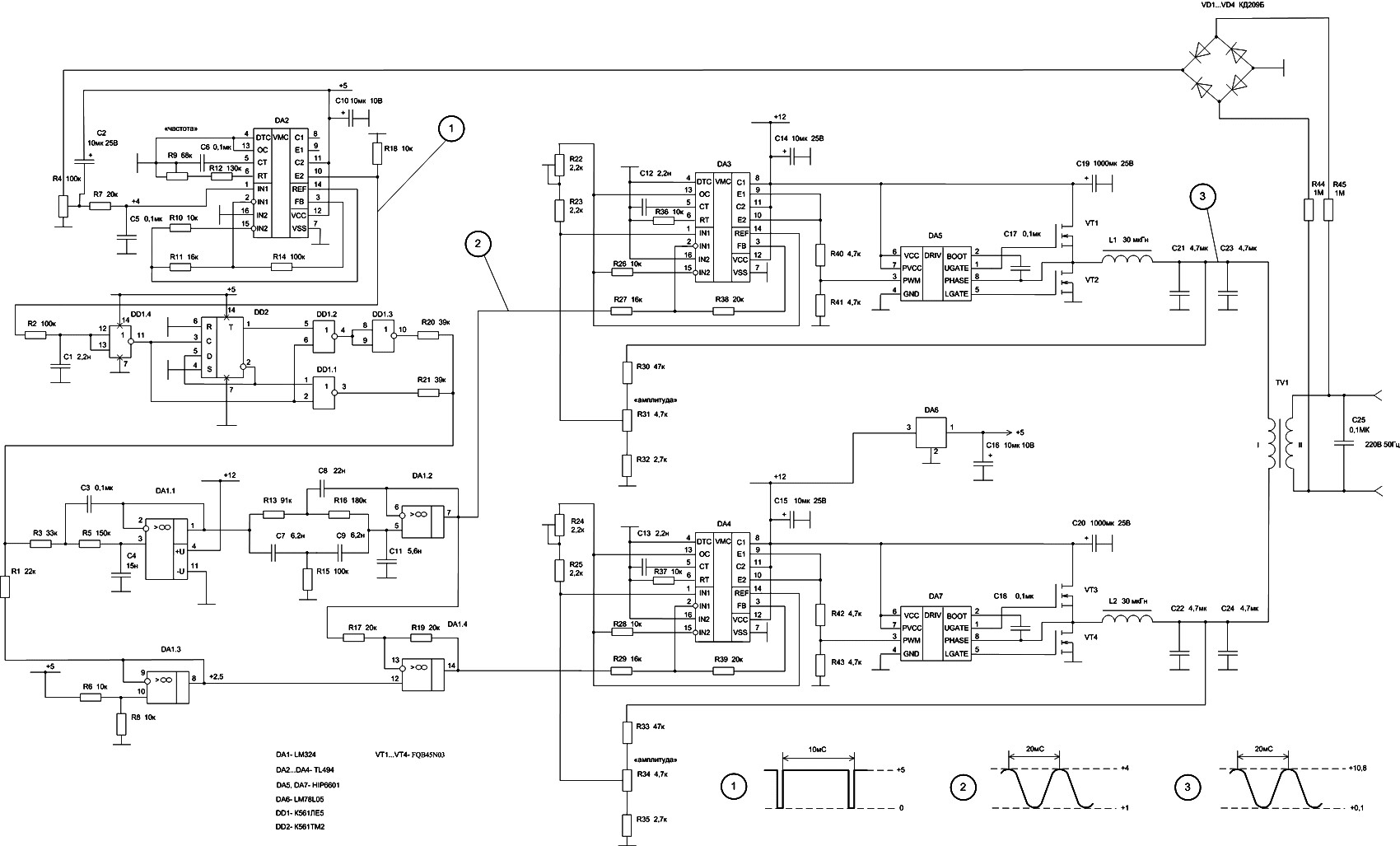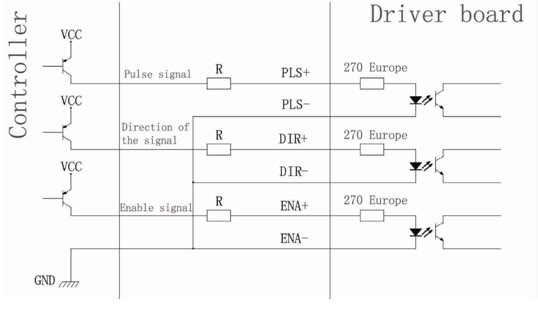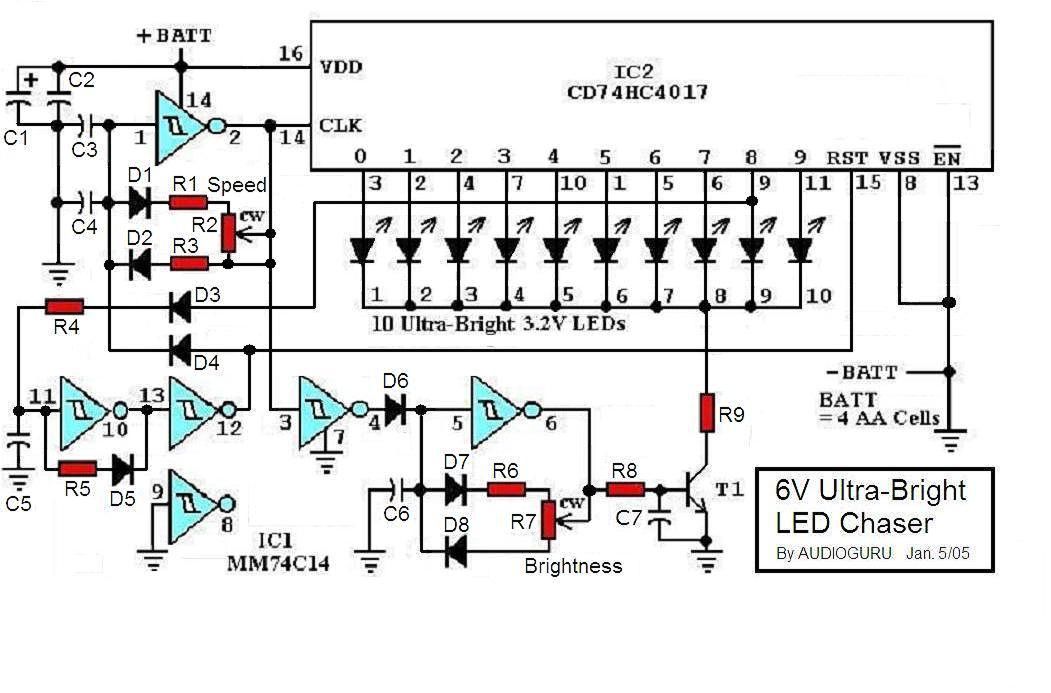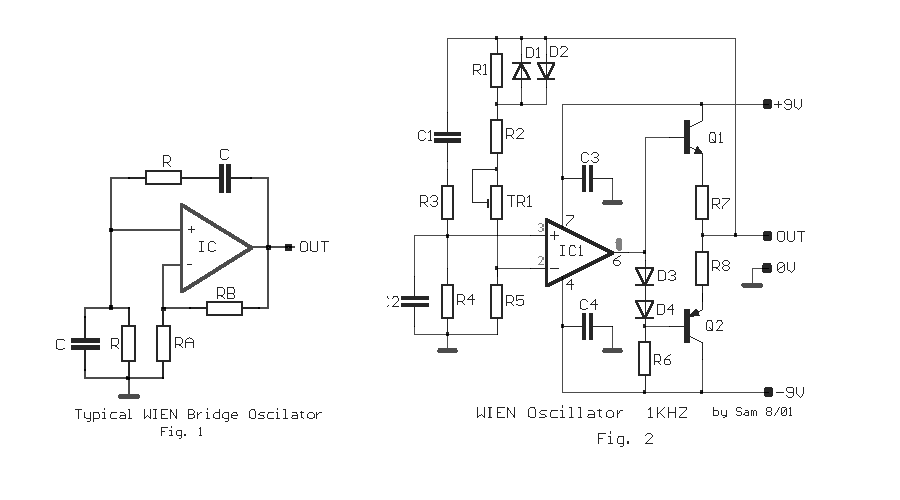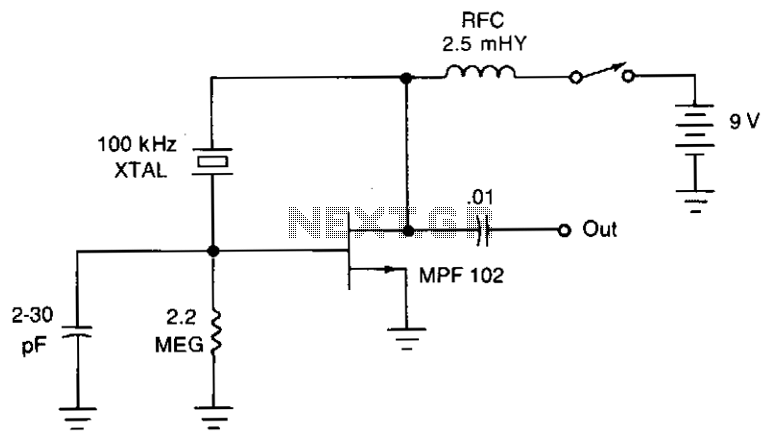
Swept sine oscillator has quadrature output
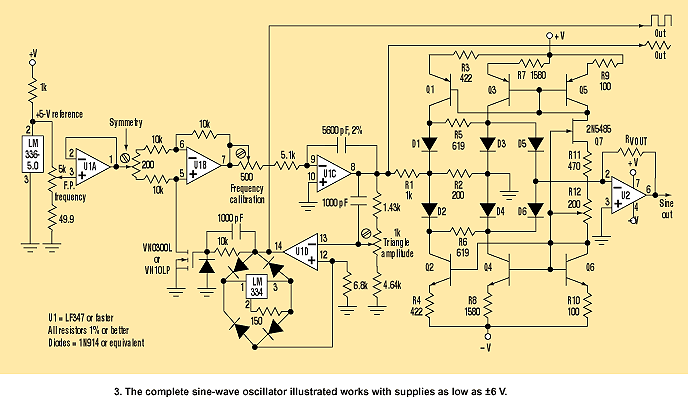
Signals with a known frequency but an unknown phase can be detected using an in-phase signal and a signal that is shifted by 90 degrees, a method commonly utilized in lock-in amplifiers, synchronous detectors, and frequency-response analyzers. The signal that is shifted by 90 degrees is referred to as the quadrature signal. By multiplying the received signal with these reference signals, the resulting low-pass filtered outputs will represent the real and imaginary components of the received signal. Once these two components are identified, they can be converted into amplitude and phase. For frequency response analysis, a sine signal excites the system, and the system's output is demodulated using the two reference signals. Ignoring harmonics, multiplication can be executed with square-wave reference signals, which control amplifiers that have a digitally adjustable gain of either +1 or -1. The frequency must be swept across the range of interest. Designing a swept-sine generator with quadrature output is a complex task. However, an undocumented feature of Maxim's MAX038 oscillator chip simplifies this for low-frequency applications. The MAX038 is capable of generating sine, triangle, and square-wave signals, and its frequency can be adjusted over a range of 2 to 3 decades by varying a control current. By altering the frequency-determining capacitor, this range can be significantly increased. The MAX038 provides an OUT signal output and a SYNC logic level output when powered by ±5 V. The SYNC output maintains a 50% duty cycle, while the output signal's duty cycle is adjustable. For quadrature applications, the output signal should be set to a 50% duty cycle. Additionally, the chip includes a phase detector that can generate the quadrature signal. The phase relationships of SYNC, OUT, and the phase detector output (PDO) are illustrated in Figure 1. By applying a constant high or low level at the phase detector input (PDI), the PDO can be configured to either lag or lead the SYNC signal by 90 degrees. If the PDI is connected to the SYNC output instead of a logic level, the frequency of the phase detector output will be twice that of SYNC. Furthermore, the rising edge of PDO aligns with that of SYNC, which holds true for any duty cycle (as shown in Figure 2). The data sheet does not provide an in-depth description of the phase detector and the circuit driving PDO; it merely states that the output functions as a current source toggling between 0 and 500 µA. While this may apply to its intended application, it does not hold when a resistor is connected to ground. When left open, the output fluctuates between approximately -2.3 V and +4 V, with the negative voltage appearing to be an internal level with a source resistance of 10 to 15 kΩ. When loaded with a 5 kΩ resistor, the output varies between about -0.7 V and +3.2 V. Due to uncertainties regarding the effects of loading on the chip's internal operation, it is advisable to use a high-impedance load, such as a CMOS gate input. Additional information regarding the MAX038 has been provided by Roger M. Kenyon, a senior member of the Applications Department technical staff at Maxim. Mr. Kenyon confirms that Mr. Olsen's analysis of the relationships between the SYNC pin and the OUT pin is accurate. In sinusoidal mode, the rising edge of SYNC corresponds to the rising zero-crossing of OUT. In square-wave mode, the rising edge of SYNC occurs 90 degrees before the rising edge of OUT. Internally, the signal received by the phase detector is a SYNC signal that is phase-shifted by 90 degrees (as shown in Figure 3). Therefore, if the PDI pin is held high in sinusoidal mode, a positive edge at PDO corresponds to a valley at OUT, while a negative edge at PDO corresponds to a peak at OUT. Conversely, if PDI is held low, a positive edge at PDO corresponds to a peak at OUT, and a negative edge at PDO corresponds to a valley at OUT. This internal phase shift makes the SYNC and PDO outputs well-suited for generating quadrature signals for OUT. A typical application of the internal phase detector involves Phase-Locked Loop (PLL) operations, where the signal applied to PDI is compared to the internal SYNC signal.
The MAX038 oscillator chip is a versatile component utilized for generating various waveform outputs, including sine, triangle, and square waves, making it suitable for a range of applications in signal processing and analysis. The ability to sweep frequencies over a wide range allows for dynamic testing and analysis of systems, especially in low-frequency applications. Its architecture includes a phase detector that facilitates the generation of quadrature signals, essential for demodulation and phase analysis in various electronic systems. The phase detector's operation, in conjunction with the SYNC and OUT signals, enables precise control of phase relationships, which is critical in applications such as PLLs and frequency response analysis. The design considerations for loading and impedance are important for maintaining the integrity of the output signals, ensuring that the oscillator performs reliably under varying conditions. The MAX038's features, combined with its ease of use, make it a valuable tool for engineers working on signal generation and analysis tasks.Signals with a know frequency but unknown phase may be detected using an in-phase and a 90 ° shifted reference signal, as frequently used in lock-in amplifiers, synchronous detectors, and frequency-response analyzers. The 90 °-shifted signal is called the quadrature signal. By multiplying the received signal with the reference signals, the low-pas s filtered outputs will represent the real and imaginary components of the received signal. Once the two components are known, this complex number can be converted into amplitude and phase. When used for frequency response analysis, the system is excited with a sine signal and the output of the system is demodulated using the two references. Neglecting harmonics, the multiplication can be performed using square-wave reference signals, which control amplifiers with a digitally controlled gain of either +1 or ’1.
The frequency must be swept over the range of interest. Designing a swept-sine generator with quadrature output isn`t a trivial task, though. For low-frequency purposes, an undocumented feature of Maxim`s MAX038 oscillator chip makes this easy. The MAX038 is a sine, triangle, and square-wave generator whose frequency can be swept over 2 to 3 decades by a control current.
By switching the frequency-determining capacitor, this range can be considerably extended. The MAX038 has an OUT signal output and a SYNC logic level output (when powered by ±5 V). The SYNC output always has a 50% duty cycle, but the duty cycle of the output signal can be adjusted. For quadrature purposes, the output signal should be adjusted to 50% duty. The chip also contains a phase detector that can be used to generate the quadrature. Figure 1 indicates the phase relations of SYNC, OUT, and the phasedetector output (PDO). By setting a constant high or low level at the phase-detector input (PDI), one can select PDO to either lag or lead SYNC by 90 °.
If PDI is connected to the SYNC output instead of a logic level, the frequency of the phase-detector output is twice that of SYNC. Also, the rising edge of PDO coincides with that of SYNC, which is the case for any duty cycle ( Fig.
2 ). The data sheet doesn`t give a detailed description of the phase detector and the circuit driving PDO ”the output is simply described as a current source switching between 0 and 500 µA. This may be the case for its intended use, but not when loaded by a resistor to ground. When left open, the output alternates between about ’2. 3 and +4 V. The negative voltage apparently is an internal level with a source resistance of 10 to 15 k ©. When loaded by 5 k ©, the output swings between about ’0. 7 and +3. 2 V. Being uncertain about the effects of loading on internal chip operation, a high-impedance load (i. e. , a CMOS gate input) is recommended. Ed-The following supplemental information about the MAX038 was provided by Roger M. Kenyon, senior member of the Applications Dept. technical staff at Maxim: Mr. Olsen`s analysis of the relationships between the SYNC pin and the OUT pin is correct. In sinusoidal mode, the rising edge of SYNC corresponds to the rising zero-crossing of OUT. In square-wave mode, the rising edge of SYNC precedes the rising edge of OUT by 90 °. Internally, the input signal received by the phase detector is a 90 ° lag phase-shifted SYNC signal ( Fig.
3 ). Therefore, as demonstrated by Mr. Olsen, if the PDI pin is held high in sinusoidal mode, then a positive edge at PDO corresponds to a valley at OUT and a negative edge at PDO corresponds to a peak at OUT. If PDI is held low, then a positive edge at PDO corresponds to a peak at OUT and a negative edge at PDO corresponds to a valley at OUT.
Because of this internal phase shift, the SYNC and PDO outputs are ideally suited for developing quadrature signals for OUT. A typical application for the internal phase detector involves PLL operation. The signal applied to PDI is compared to the internal SYNC signal 🔗 External reference
The MAX038 oscillator chip is a versatile component utilized for generating various waveform outputs, including sine, triangle, and square waves, making it suitable for a range of applications in signal processing and analysis. The ability to sweep frequencies over a wide range allows for dynamic testing and analysis of systems, especially in low-frequency applications. Its architecture includes a phase detector that facilitates the generation of quadrature signals, essential for demodulation and phase analysis in various electronic systems. The phase detector's operation, in conjunction with the SYNC and OUT signals, enables precise control of phase relationships, which is critical in applications such as PLLs and frequency response analysis. The design considerations for loading and impedance are important for maintaining the integrity of the output signals, ensuring that the oscillator performs reliably under varying conditions. The MAX038's features, combined with its ease of use, make it a valuable tool for engineers working on signal generation and analysis tasks.Signals with a know frequency but unknown phase may be detected using an in-phase and a 90 ° shifted reference signal, as frequently used in lock-in amplifiers, synchronous detectors, and frequency-response analyzers. The 90 °-shifted signal is called the quadrature signal. By multiplying the received signal with the reference signals, the low-pas s filtered outputs will represent the real and imaginary components of the received signal. Once the two components are known, this complex number can be converted into amplitude and phase. When used for frequency response analysis, the system is excited with a sine signal and the output of the system is demodulated using the two references. Neglecting harmonics, the multiplication can be performed using square-wave reference signals, which control amplifiers with a digitally controlled gain of either +1 or ’1.
The frequency must be swept over the range of interest. Designing a swept-sine generator with quadrature output isn`t a trivial task, though. For low-frequency purposes, an undocumented feature of Maxim`s MAX038 oscillator chip makes this easy. The MAX038 is a sine, triangle, and square-wave generator whose frequency can be swept over 2 to 3 decades by a control current.
By switching the frequency-determining capacitor, this range can be considerably extended. The MAX038 has an OUT signal output and a SYNC logic level output (when powered by ±5 V). The SYNC output always has a 50% duty cycle, but the duty cycle of the output signal can be adjusted. For quadrature purposes, the output signal should be adjusted to 50% duty. The chip also contains a phase detector that can be used to generate the quadrature. Figure 1 indicates the phase relations of SYNC, OUT, and the phasedetector output (PDO). By setting a constant high or low level at the phase-detector input (PDI), one can select PDO to either lag or lead SYNC by 90 °.
If PDI is connected to the SYNC output instead of a logic level, the frequency of the phase-detector output is twice that of SYNC. Also, the rising edge of PDO coincides with that of SYNC, which is the case for any duty cycle ( Fig.
2 ). The data sheet doesn`t give a detailed description of the phase detector and the circuit driving PDO ”the output is simply described as a current source switching between 0 and 500 µA. This may be the case for its intended use, but not when loaded by a resistor to ground. When left open, the output alternates between about ’2. 3 and +4 V. The negative voltage apparently is an internal level with a source resistance of 10 to 15 k ©. When loaded by 5 k ©, the output swings between about ’0. 7 and +3. 2 V. Being uncertain about the effects of loading on internal chip operation, a high-impedance load (i. e. , a CMOS gate input) is recommended. Ed-The following supplemental information about the MAX038 was provided by Roger M. Kenyon, senior member of the Applications Dept. technical staff at Maxim: Mr. Olsen`s analysis of the relationships between the SYNC pin and the OUT pin is correct. In sinusoidal mode, the rising edge of SYNC corresponds to the rising zero-crossing of OUT. In square-wave mode, the rising edge of SYNC precedes the rising edge of OUT by 90 °. Internally, the input signal received by the phase detector is a 90 ° lag phase-shifted SYNC signal ( Fig.
3 ). Therefore, as demonstrated by Mr. Olsen, if the PDI pin is held high in sinusoidal mode, then a positive edge at PDO corresponds to a valley at OUT and a negative edge at PDO corresponds to a peak at OUT. If PDI is held low, then a positive edge at PDO corresponds to a peak at OUT and a negative edge at PDO corresponds to a valley at OUT.
Because of this internal phase shift, the SYNC and PDO outputs are ideally suited for developing quadrature signals for OUT. A typical application for the internal phase detector involves PLL operation. The signal applied to PDI is compared to the internal SYNC signal 🔗 External reference
Warning: include(partials/cookie-banner.php): Failed to open stream: Permission denied in /var/www/html/nextgr/view-circuit.php on line 713
Warning: include(): Failed opening 'partials/cookie-banner.php' for inclusion (include_path='.:/usr/share/php') in /var/www/html/nextgr/view-circuit.php on line 713
